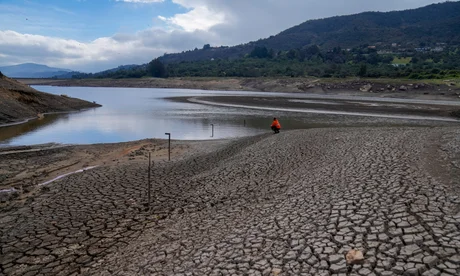Inamhi reports that unusual atmospheric conditions have made cloud formation challenging, a rarity for the country. This has also contributed to rising temperatures.
According to Ecuador’s National Institute of Meteorology and Hydrology (Inamhi), there is a significant rainfall deficit in five coastal provinces, five in the highlands, and across the entire Amazon region.
Inamhi reports that atmospheric conditions have hindered cloud formation, an unusual phenomenon affecting the entire country. This, in turn, has caused a rise in temperatures.
Ecuador is grappling with extreme weather conditions that have triggered an energy crisis and prompted new scheduled blackouts. The government attributes the crisis to the worst drought the country has seen in 61 years. At the heart of the problem is the ongoing lack of rainfall, which has severely depleted reservoirs feeding the nation’s hydroelectric plants.
This scarcity of rain has not only led to power outages but also to water rationing in several cities. Combined with soaring temperatures, large forest fires have ravaged thousands of hectares across Ecuador.
Regional Impact
In a recent interview, Vladimir Arreaga, a technician at Inamhi, spoke about the country’s current situation and the broader trend of increasing extreme weather events, both regionally and globally.
Arreaga notes that Ecuador is not alone in experiencing a shortage of rainfall. Countries like Brazil, Colombia, and Peru are also affected. Meanwhile, in other parts of the world, rain has been falling in areas where it is not typically expected.
Understanding the Rainfall Deficit
The reason for the prolonged dry spell is complex. Arreaga explains that the atmospheric systems that usually produce rain have been stifled, preventing the formation of clouds and, consequently, rainfall.
This disruption has not only exacerbated Ecuador’s energy crisis but has also worsened water supply issues and intensified the risk of wildfires. The country’s rivers have seen reduced flow, contributing to widespread drought.
Arreaga emphasizes that nearly the entire country is affected. On the coast, the provinces of Manabí, Los Ríos, Guayas, Santa Elena, and El Oro are suffering from a severe lack of rain. In the highlands, Imbabura, Pichincha, Cotopaxi, Azuay, and Loja are the hardest hit.
The situation in the highlands is particularly dire. In Cuenca, for example, this is the second-driest September in 44 years. The only year worse was 2015, when Cuenca recorded just 4 mm of rain during the month.
In the Amazon, the situation is equally concerning, as all provinces are experiencing significant rainfall deficits compared to previous years.
When Will the Rains Return?
Forecasting the return of rainfall is difficult, says Arreaga. In the Amazon, rain is expected this weekend, which could help restore humidity levels. However, in the highlands, rain might not return until late September or early October. Arreaga cautions that this is a preliminary estimate and could change depending on atmospheric conditions.
The coastal region, meanwhile, will likely have to wait until November for the start of the rainy season.
Solving Ecuador’s energy crisis will require consistent and sustained rainfall over an extended period. Unfortunately, this is impossible to predict at this point, and more accurate forecasts will be available later.
Rising Temperatures
Arreaga also points out that the lack of rainfall is closely linked to rising temperatures in several cities. The absence of clouds allows direct solar radiation to reach the Earth’s surface, leading to extreme heat.
For example, in Quito, the Tababela area has seen temperatures reach 28.9 degrees Celsius, while the Iñaquito neighborhood (near La Carolina) has experienced highs of 27.5 degrees Celsius.
While it is normal for temperatures to peak during the sunniest months, the combination of extreme heat and the absence of rain is highly unusual.
Arreaga warns that atmospheric conditions should shift by the end of September or early October, bringing relief through rainfall and a drop in temperatures. However, the onset of the rainy season may bring its own challenges, as extreme rainfall could result in other complications.


0 Comments